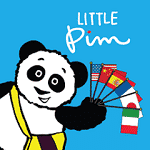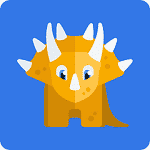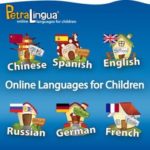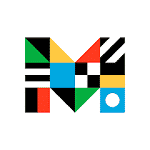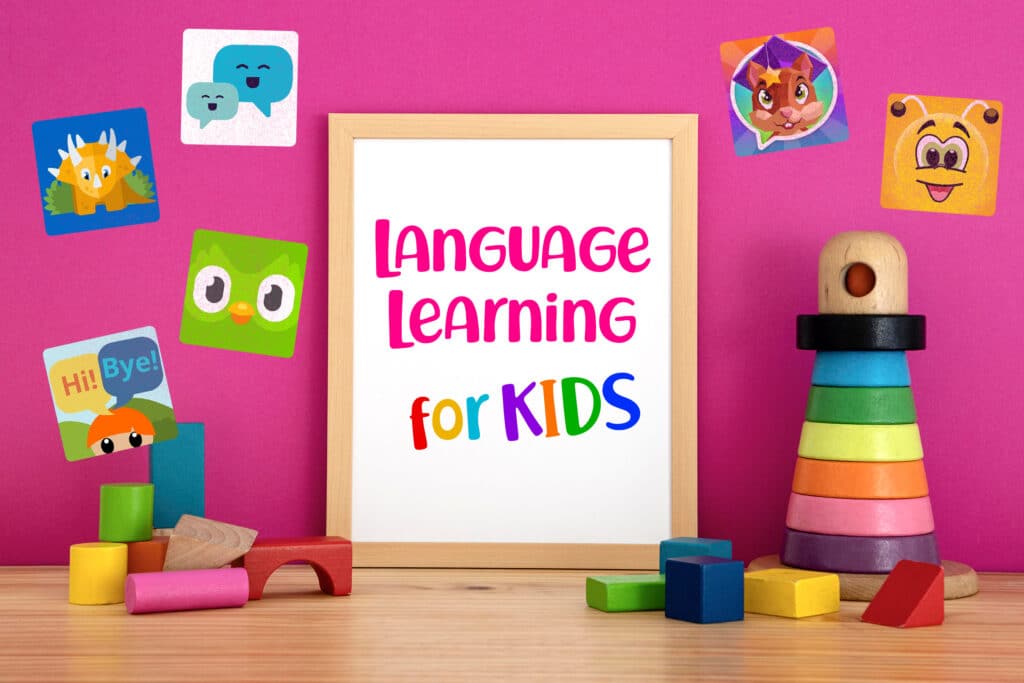
14 Online Language Learning Resources for Kids
Looking for online language learning programs for your kids?
Whether you’re a language learner yourself or just an awesome parent/caretaker, giving children access to the benefits of being bilingual is one of the best things you can do for them.
Read on for a look at the best language-learning apps for kids.
Contents
- 1. Best for Short Videos: Little Pim
- 2. Best for Language Range: Dinolingo
- 3. Best for Story-based Learning: Muzzy BBC
- 4. Best for Games: Duolingo Super Family
- 5. Best for Vocabulary: PetraLingua
- 6. Best for Conversational Skills: Mango Languages
- 7. Best for Engaging Interface: Languagenut
- 8. Best for Audio and Video: PBS Learning Media
- 9. Best for Learning with Books: Unuhi: Bilingual Books
- 10. Best for Interactive Learning: Studycat
- 11. Best for Complete Beginners: Gus on the Go
- 12. Best for Range of Topics: Mondly Kids
- 13. Best for Learning the Basics: Teach Kids Languages
- 14. Best for Range of Levels: Fun Easy Learn
Download: This blog post is available as a convenient and portable PDF that you can take anywhere. Click here to get a copy. (Download)
1. Best for Short Videos: Little Pim
Recommended age: 1-6
Available languages: Spanish, French, Mandarin Chinese, Italian, German, Arabic, Hebrew, Russian, Portuguese, Japanese, Korean and English/ESL with English or Spanish.
Price: $9.99/month, $69.99/year
Little Pim, a lovable panda, can be your children’s video guide to learning any or all of the 12 languages on offer. What used to be recorded on multiple DVDs can now be streamed or digitally downloaded. You’ll still get that Little Pim cuteness and goofy goodness that won the program over 25 awards.
Their learning system, the Entertainment Immersion Method, was developed by top language teachers and neuroscientists. It employs repetition, play and child-friendly themes to tap into toddlers’ natural love for learning. The videos are a combination of animations and live-action clips that introduce topics like colors and numbers. They run for only five minutes to accommodate their young audience.
2. Best for Language Range: Dinolingo
Recommended age: 2-12
Available languages: 51 languages including popular languages like Mandarin Chinese, Spanish and German, and less popular choices like Danish, Pubjabi and Hawaiian.
Price: $14.95/month for four children to access one language, $14.95/month for each additional language.
Dinolingo is an award-winning language program for kids, named so for the cute dinosaurs who introduce your kids to their target languages. The program gets children to learn new languages through games, songs, videos, worksheets and more. Languages come with a wide range of excellent resources created with kids in mind, like audiobooks and storybooks, flashcards and games, like memory games and word wheels (for vocab acquisition).
The program covers everyday topics such as household items, family, body parts, clothes, nature and actions. It does so in a colorful and fun way that’ll have your kids happily repeating these lessons over and over.
3. Best for Story-based Learning: Muzzy BBC
Recommended age: all ages
Available languages:
- Online: Spanish (Latin America or Catalonian), French, English (British or American), German, Italian, Mandarin Chinese and Korean.
- On DVD: Spanish, French, English, German, Italian and Mandarin Chinese.
Price: $14.66/month. Semi-annual and annual plans available. Risk-free trial period and payment plan with the DVD set.
MUZZY is the BBC’s answer to language learning for all ages. This immersion program is centered around animated characters and stories in video “episodes.” The episodes are designed to naturally build on one another, enabling your child to learn through an engaging, interactive method, rather than traditional “teaching.”
You can watch the videos wherever is convenient, whether that’s on the website or the apps, or through an on-demand service like Roku, FireTV or Chromecast.
The program will introduce your child to 600+ vocabulary words and cover everyday topics like telling time, talking about food, transportation, occupations, basic tenses (past, present and future), asking questions and more.
4. Best for Games: Duolingo Super Family
Recommended age: all ages
Available languages: 39 languages (some in beta), including unique options like Navajo and Scottish Gaelic, as well as fantasy languages like High Valerian and Klingon.
Price: $119.99/year for Duolingo Super Family, $6.99/month for Duolingo Super individual plan. Free for basic app.
Duolingo is one of the most popular language-learning programs online.
The app divides lessons into bite-sized game-like experiences. It uses repetition and different interactive activities to embed vocabulary into your mind and keep it fresh. Learners are given little tasks. The idea is that the more of these teenie tiny tasks they do, the better they’ll remember the target language.
Duolingo repeats the tasks, goes back and forth between languages, mixes and matches previously learned words and keeps learners on their toes. It also does a good job of remembering the words learners have difficulty with so they can be offered for review.
See our full review of Duolingo here.
5. Best for Vocabulary: PetraLingua
Available languages: English, Spanish, Mandarin Chinese, Russian, German and French.
Price: $7.99/month or $47.99/year for one online course. Complete sets are $89.99/language.
PetraLingua is a multimedia vocabulary builder. Each course has 21 lessons that teach a range of vocabulary, from colors and clothing to fruits and vegetables. You can check the list of topics covered before committing.
All told, each course features around 500 basic words, 80 animated language-learning videos, 11 songs, 140 interactive online games, a talking picture dictionary and a downloadable activity book.
Each lesson opens with an introductory video that identifies the vocabulary set of that lesson. This is followed by a parade of reinforcing activities, exercises and games that’ll help kids learn the new words. These include listen-and-repeat, listen-and-click and word-matching tasks that allow kids to experience the words in different contexts.
6. Best for Conversational Skills: Mango Languages
Recommended age: 6 and up
Available languages: 70+ languages, from popular options to lesser-known ones like Dari, Igbo and Uzbek.
Price: $7.99/month or $79.99/year for one language. $17.99/month or $179.99/year for all languages, up to five Family Profiles and parental controls.
Your kids are going to need headphones for this one. The uniqueness of the program lies in its focus on conversational skills. If you want your kids to study in the morning and try out their newly learned phrases with the whole family in the afternoon, Mango Languages could be a good option.
Each lesson starts by listening to a few lines of basic dialogue or conversation. The audio is accompanied by clear text of the whole exchange, and everything is color-coded so you can easily see which words correspond to their translations.
In the remainder of the lesson, the dialogue is deconstructed and broken down into lines, phrases and words. There’s a “Play” icon on every line so learners can self-pace and repeat the lines as often as they need. The learner is guided line-by-line and hears how each word is correctly spoken. Hover the mouse on a particular line to see the translation of it.
See our full review of Mango Languages here.
7. Best for Engaging Interface: Languagenut
Recommended age: 5-14
Available languages:
- Elementary school learners: 23 modern foreign languages, including English, French, Spanish, German and Mandarin Chinese.
- High school learners: Spanish, French and German.
Price: Available on request. You may book a demo before committing.
Languagenut is the perfect vocabulary builder, pronunciation partner and spelling teacher. The program amply covers all bases and touches on all four key linguistic skills: listening, speaking, reading and writing. The program has specific games that address each.
It’s widely used in schools in 32 countries around the world as a supplemental language teaching tool. But the program can be equally valuable for homeschooling families.
Languagenut may tackle the same topics (numbers, colors, greetings) as many other language programs, but it has some of the most graphically compelling interfaces on this side of language learning.
The elementary school program will teach your kids 440 words and phrases through 23 units. Target words are taught through 13 speaking, listening, reading and writing games. You’ll also find verb conjugation exercises, stories, songs and more.
8. Best for Audio and Video: PBS Learning Media
Available languages: Spanish, Japanese, French, German and Mandarin Chinese.
Price: Free. You may also create a free account to gain access to additional resources.
Although this program doesn’t offer as many languages as the others on this list, PBS Learning Media does well in tackling all the different language skills in their audio and video lessons.
The clips are divided by grade levels: PreK-K, K-2, 3-5, 6-8 and 9-12. There are only 16 videos available across all the languages in the PreK-K section, but the rest of the levels have a substantial amount of content with around 200 videos.
The section for grades 3-5 contains almost 400 videos, so PBS Learning Media would be particularly useful for elementary-aged kids. This level is also great for adults who want to learn like kids but find the early childhood content too simple.
The audio clips tend to be short, mainly focusing on listening and speaking skills, while the videos are a mix of songs, conversations and standard lessons. The standard video lessons are quite handy since they also come with supporting materials for teachers, such as the lesson plan, video transcript, flashcards, assessments and more.
9. Best for Learning with Books: Unuhi: Bilingual Books
Recommended age: 2-10
Available languages:
- Written: English, Arabic, Danish, Dutch, Filipino, Finnish, French, German, Hindi, Italian, Japanese, Mandarin Chinese (Simplified), Norwegian, Polish, Portuguese, Romanian, Russian, Spanish, Swedish and Thai.
- Audio narration: English, Spanish, French, German, Italian and Mandarin Chinese.
Price: Free for one e-book. Additional stories range from $0.99 to $3.99 for a bundle.
Meaning “translate” in Hawaiian, Unuhi is a remarkable app for teaching a foreign language to children. Not only does it allow your kids to learn in their native tongue, but it also does it through the art of storytelling. Reading is crucial for cognitive development, and letting the little ones read bilingual stories in early childhood will also form their ability to think in both of their languages.
To help them read out loud, audio narration by native speakers is available for some languages, with more options currently underway.
The stories are short, with each page containing only one sentence in dual languages, accompanied by beautiful illustrations to let the kids visually connect with new vocabulary words. To reinforce these new words, Unuhi has numerous sets of flashcards that you and the kids can practice with.
10. Best for Interactive Learning: Studycat
Recommended age: 3-10
Available languages: English, Spanish, Mandarin Chinese, French and German.
Price: $14.99/month, $59.99/year. Seven-day free trial available.
Created by a language teacher, artist and game designer in 2000, Studycat was a small classroom program that became a hit among the students. Because it was so popular with the kids, the founders turned it into a digital curriculum that they could share with fellow language teachers, schools and parents. Then, in 2011, the app was born to reach learners across the globe.
Studycat is the virtual teacher and learning buddy that’ll guide kids through phonics, plus more than 500 vocabulary terms and grammar points which align with the Cambridge Young Learners Starters program.
But instead of Studycat taking over the lesson, kids learn through fun and play—specifically interactive games, original songs and relatable cartoon characters with different voices so learners can listen to the language in different accents.
11. Best for Complete Beginners: Gus on the Go
Recommended age: 3-7
Available languages: 30 languages, from popular options like Portuguese to vulnerable tongues like Ingush.
Price: $3.99 one-time payment
Gus is a friendly owl that helps children explore the languages of the world through interactive exercises and adorable animations. Each language has its own app, so you are able to download as many languages as you want.
After every lesson, there’s a lesson review composed of fun exercises. Completing the review will unlock a cute game and trophies, which is very helpful in keeping the little ones motivated to learn more vocabulary words. The words taught in these lessons are very basic, themed around animals, food and colors, among others, making this a very good starting point for complete beginners.
Some of the languages also have free printables, such as flashcards and crafts, to supplement the learning in the apps. So far, however, Stories by Gus on the Go is only available in four languages: French, Greek, Hebrew and Spanish.
12. Best for Range of Topics: Mondly Kids
Recommended age: 5-12
Available languages: 33 languages, from popular choices like Korean and Spanish to less common options like Farsi and Afrikaans.
Price: $9.99/month, $47.99/year
Known for its innovation in language education technology, Mondly now offers gamified lessons for kids. In addition to the regular Mondly features (quick daily lessons and audio by professional native speakers), the Mondly Kids app has really kid-friendly illustrations and cool sound effects to keep them engaged with new vocab words.
And unlike the original app which includes a leaderboard, the statistics on the kids’ app are exhibited on a brain map. It’s a smart move to remove the competitive element of the original Mondly app, as having the little ones participate in this kind of competition might add unnecessary stress and pressure to a program that’s meant to be fun.
The Mondly app for kids is quite impressive in terms of the topics they cover. Other than the standard food, animals, colors, numbers and parts of the body, they also have categories such as buildings, leisure and professions.
See our full review of Mondly here.
13. Best for Learning the Basics: Teach Kids Languages
Recommended age: 2-7
Available languages: English, French, German, Spanish, Polish, Dutch, Esperanto and Turkish.
Price: Free for three themes. $2.99/month or $26.49/year for full access.
The Teach Kids Languages app uses fun games to teach languages to children. With puzzles, memory games and quizzes, learning never needs to be boring.
The app starts from the basics so kids can learn proper spelling and pronunciation of common vocabulary words.
Vocabulary is a huge focus, and the words taught are mostly general terms that children use often, like colors, numbers, shapes, animals, clothing and more.
The animations are cute and use a soothing color scheme, which prevents them from being overstimulating. The Teach Kids Languages app is free to download, while additional in-app purchases unlock more content.
14. Best for Range of Levels: Fun Easy Learn
Recommended age: 4 and up
Available languages: 62 languages, from popular choices like Spanish to less common ones like Slovak and Thai.
Price: Free. Premium, ad-free access available for $11.99-$129.99 (prices range depending on number of languages and length of access time).
Fun Easy Learn offers intuitive, easy-to-use language learning apps. These apps are designed for visual and/or auditory learners in general, but many of the images and features are particularly appealing to children.
Fun Easy Learn offers a great assortment of learning materials. Each app contains 5,000-6,000 words with audio spoken by native speakers. Words are logically organized in 15+ main themes with 140+ subcategories. Fun games are also available to keep you learning.
The apps are organized into three difficulty levels, from beginning through advanced, so they’re appropriate for any level language learner.
Each of the above programs has its strengths and specialties, so you can choose whatever fits you and your child’s situation.
Good luck!
Download: This blog post is available as a convenient and portable PDF that you can take anywhere. Click here to get a copy. (Download)
